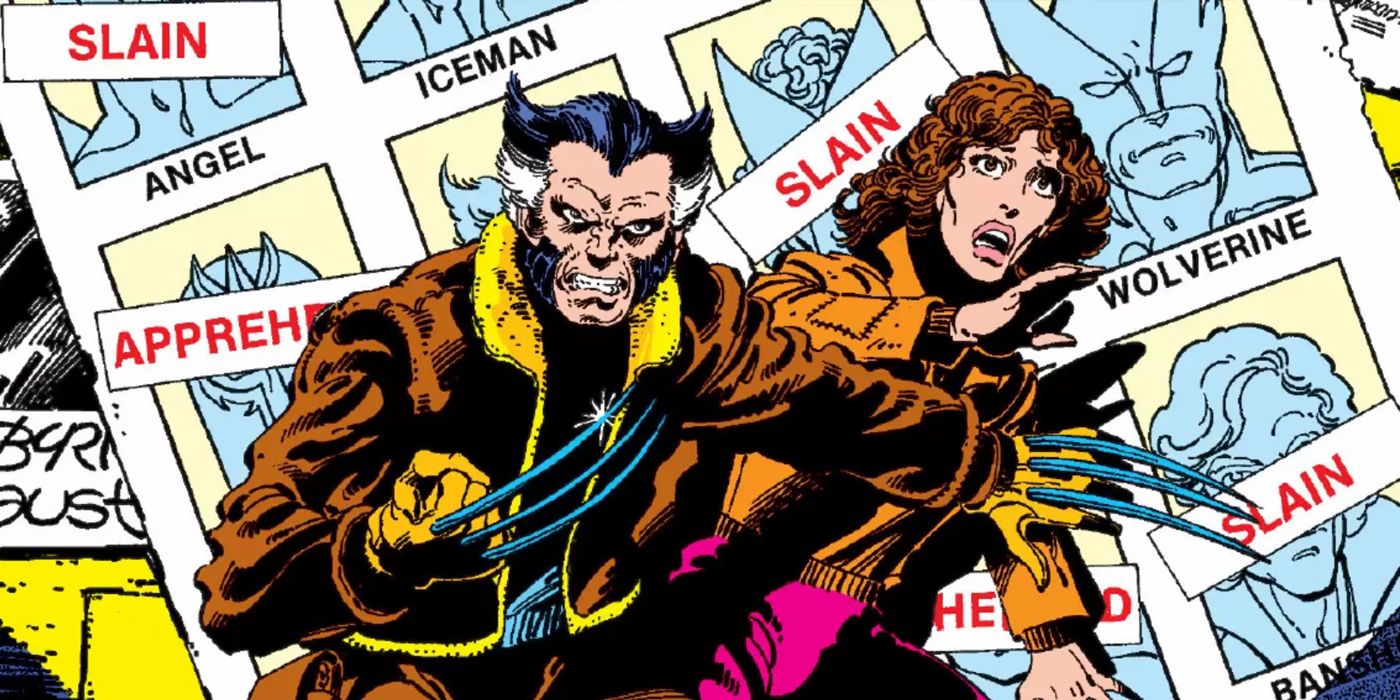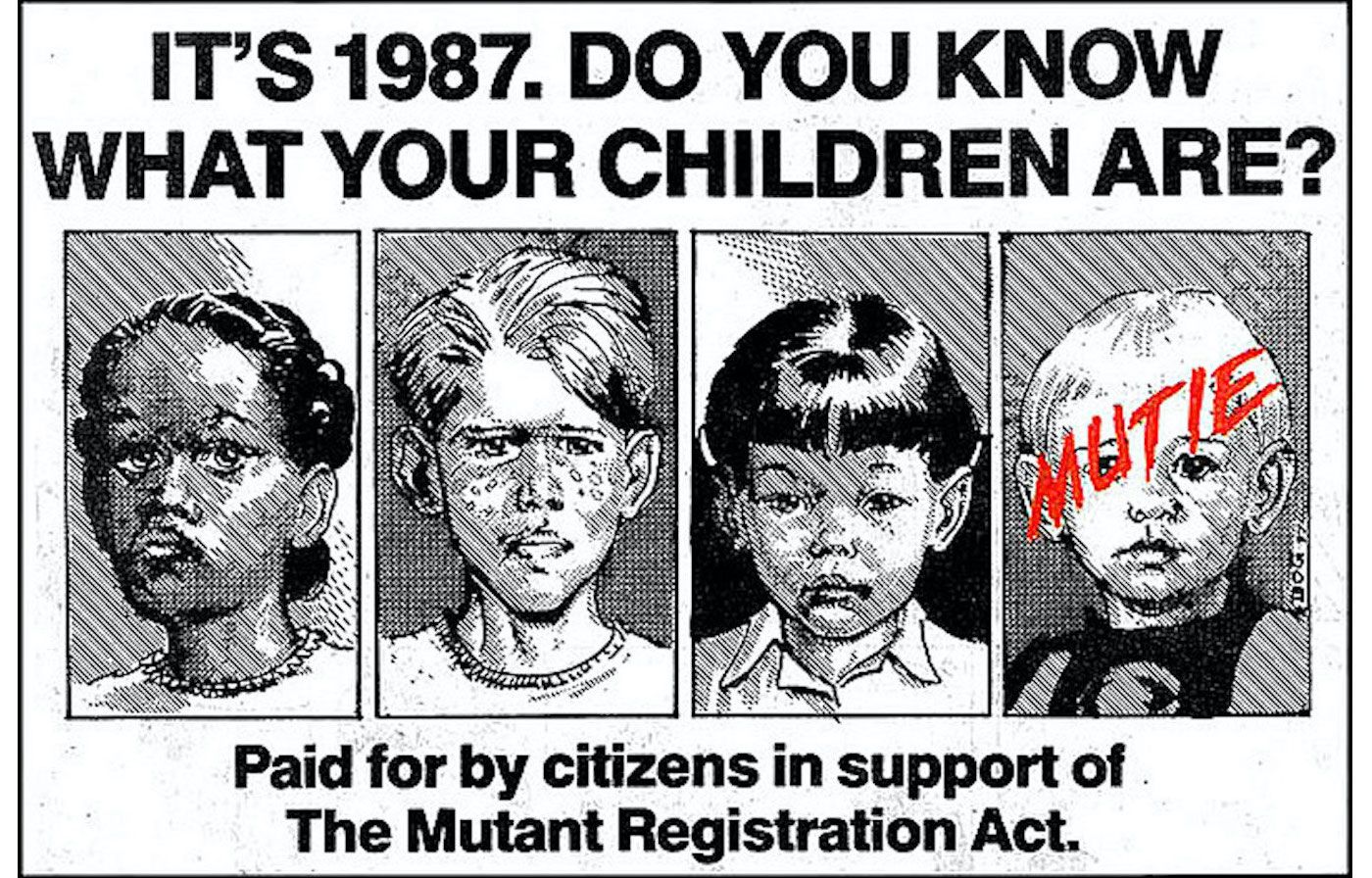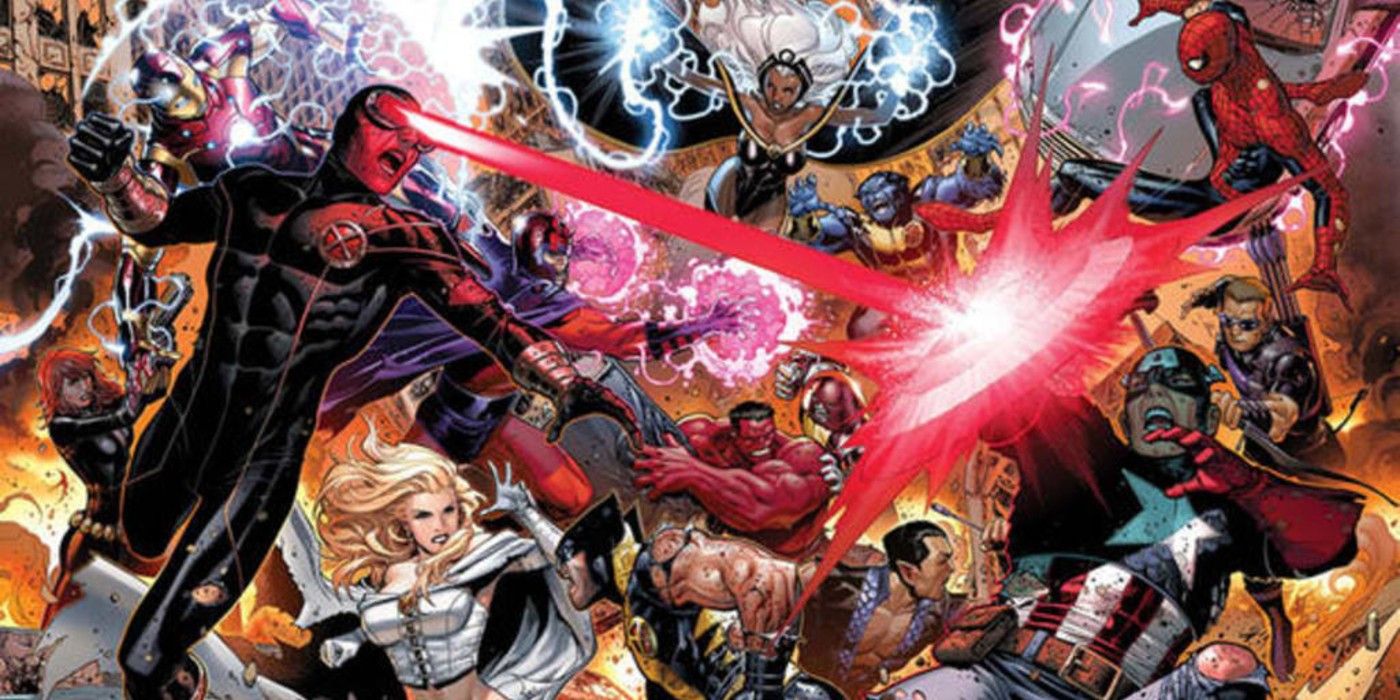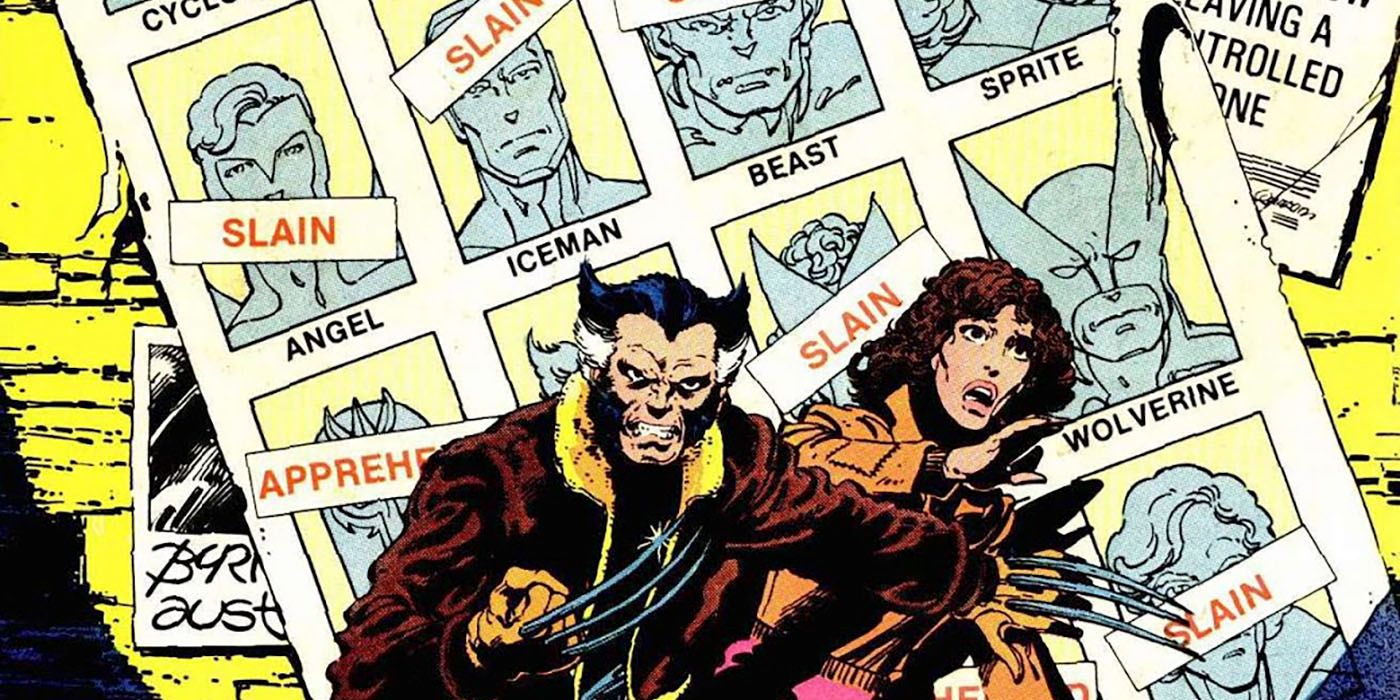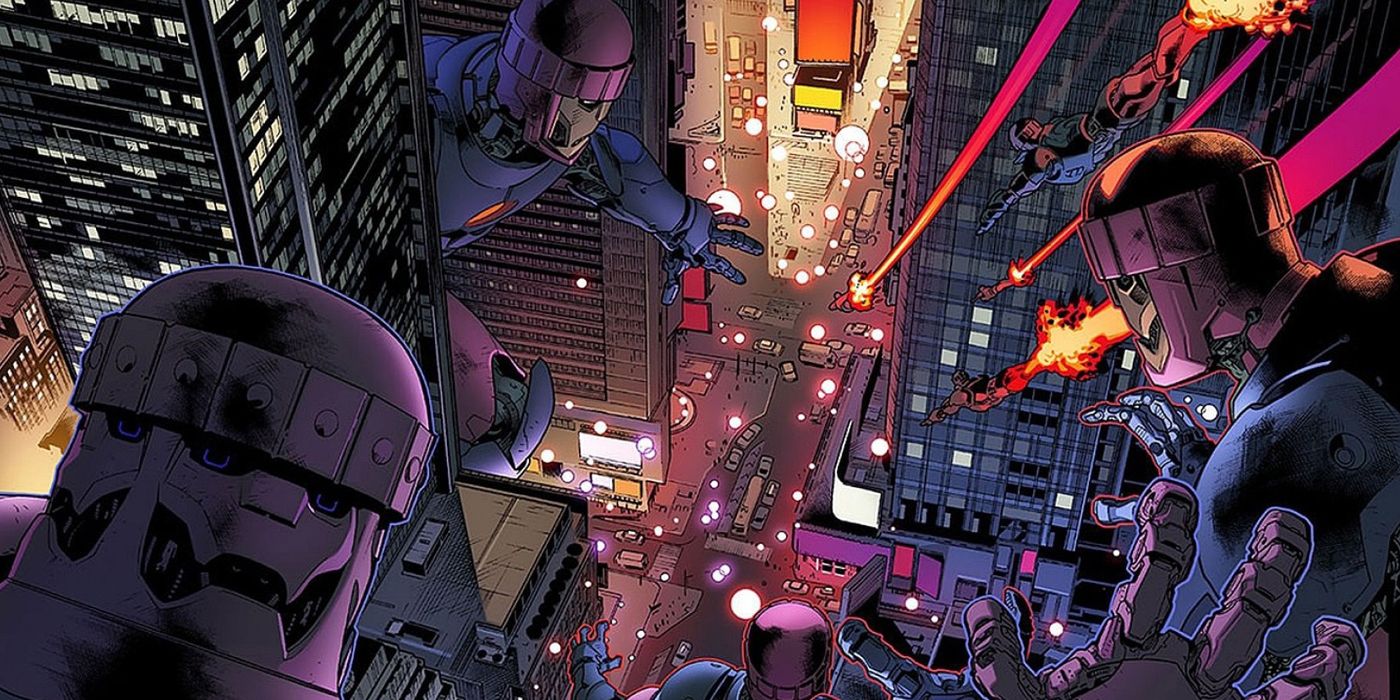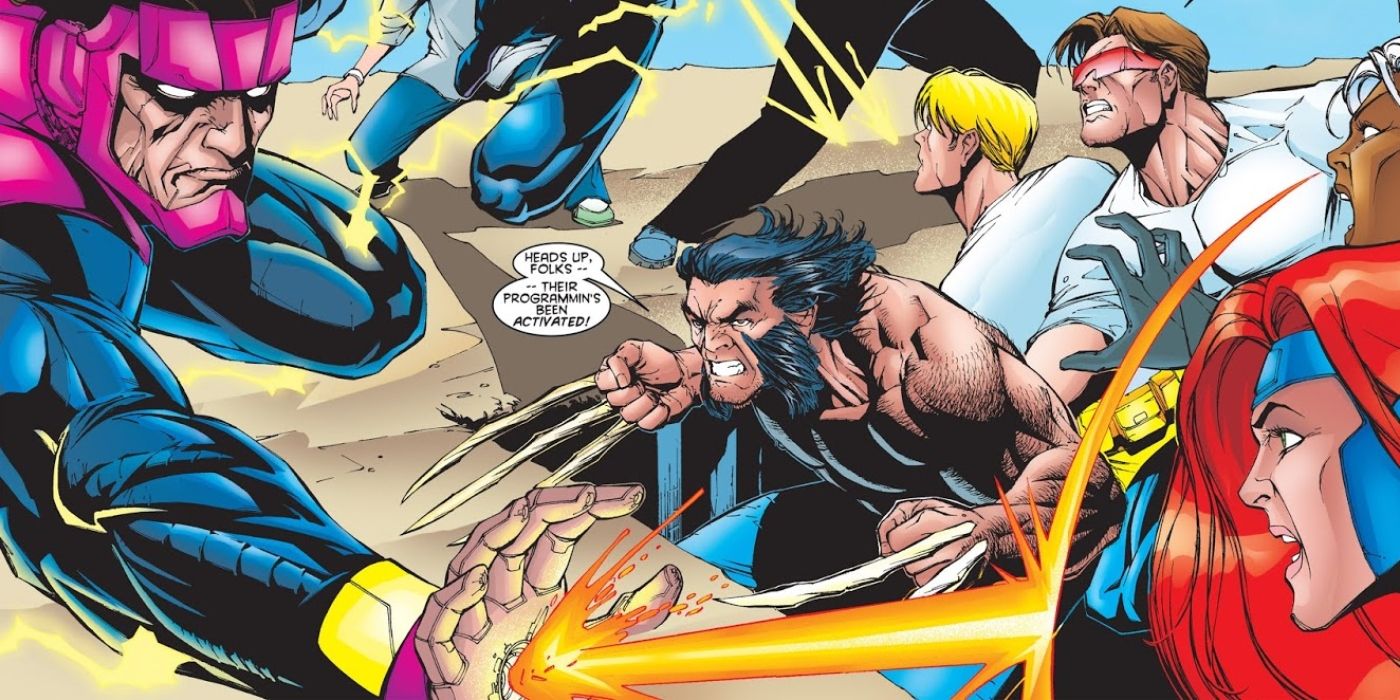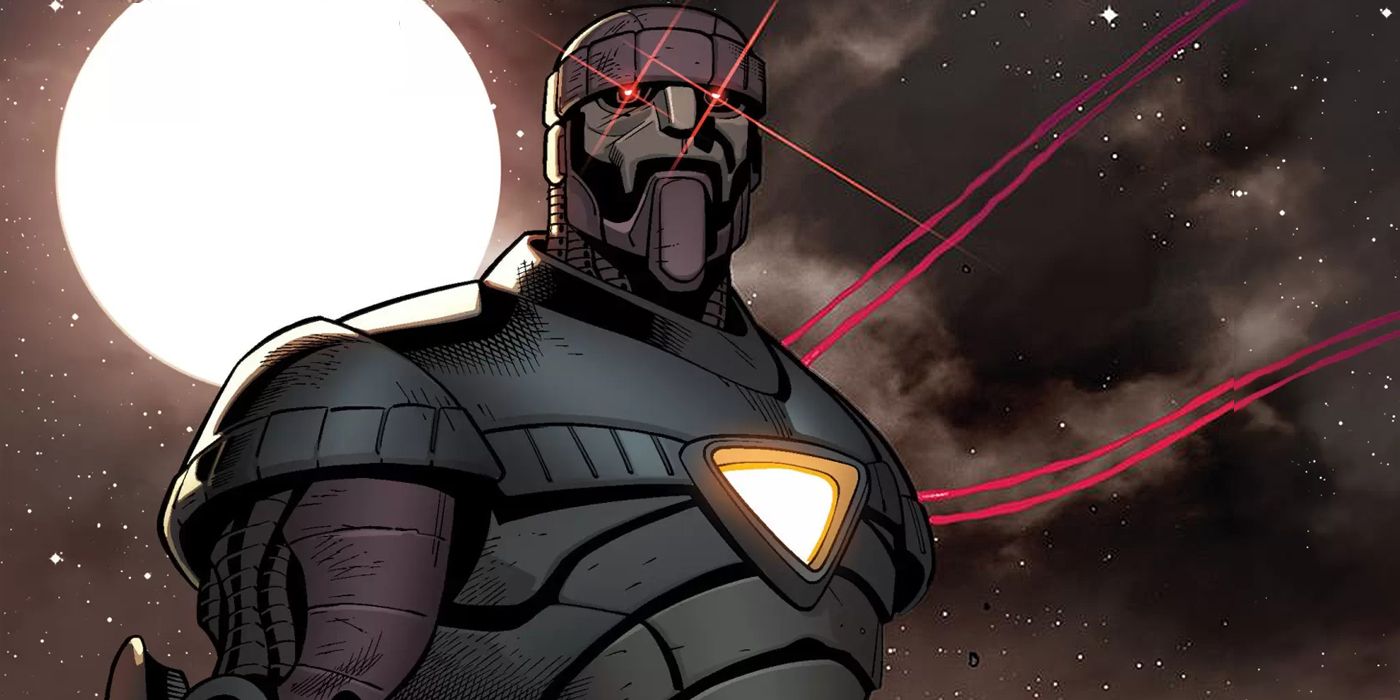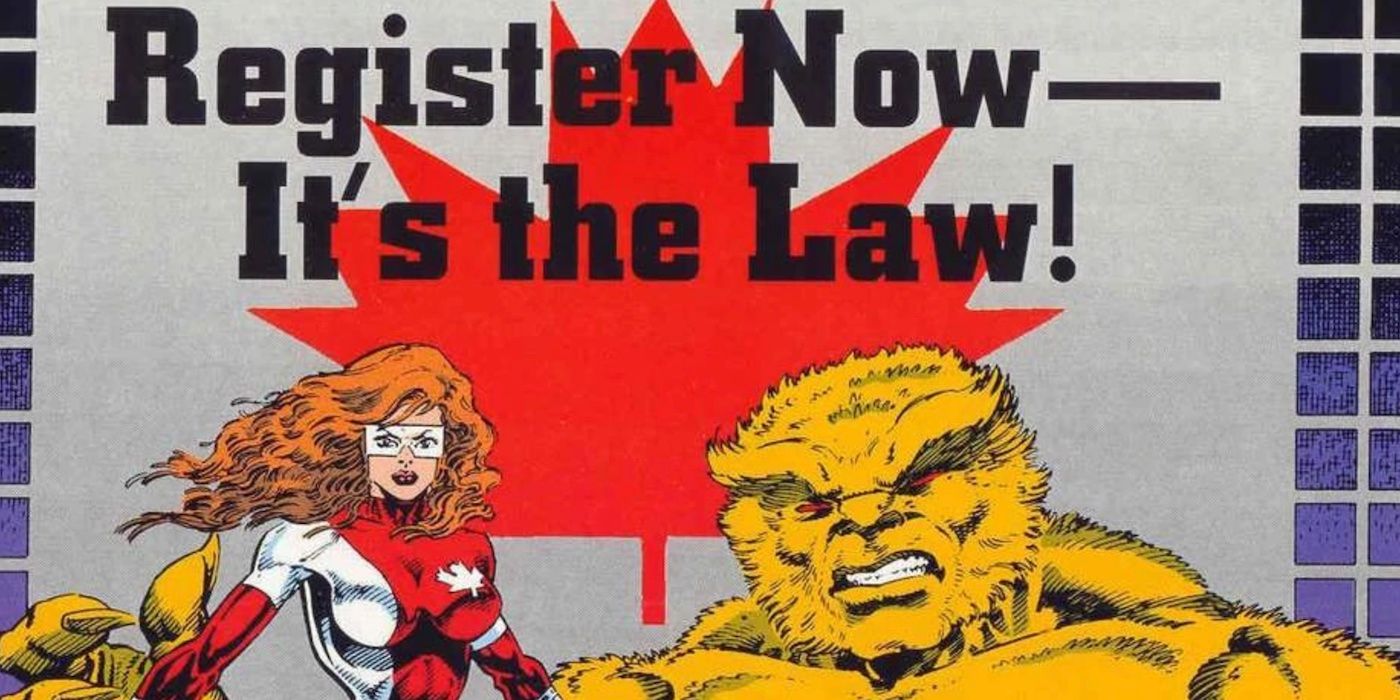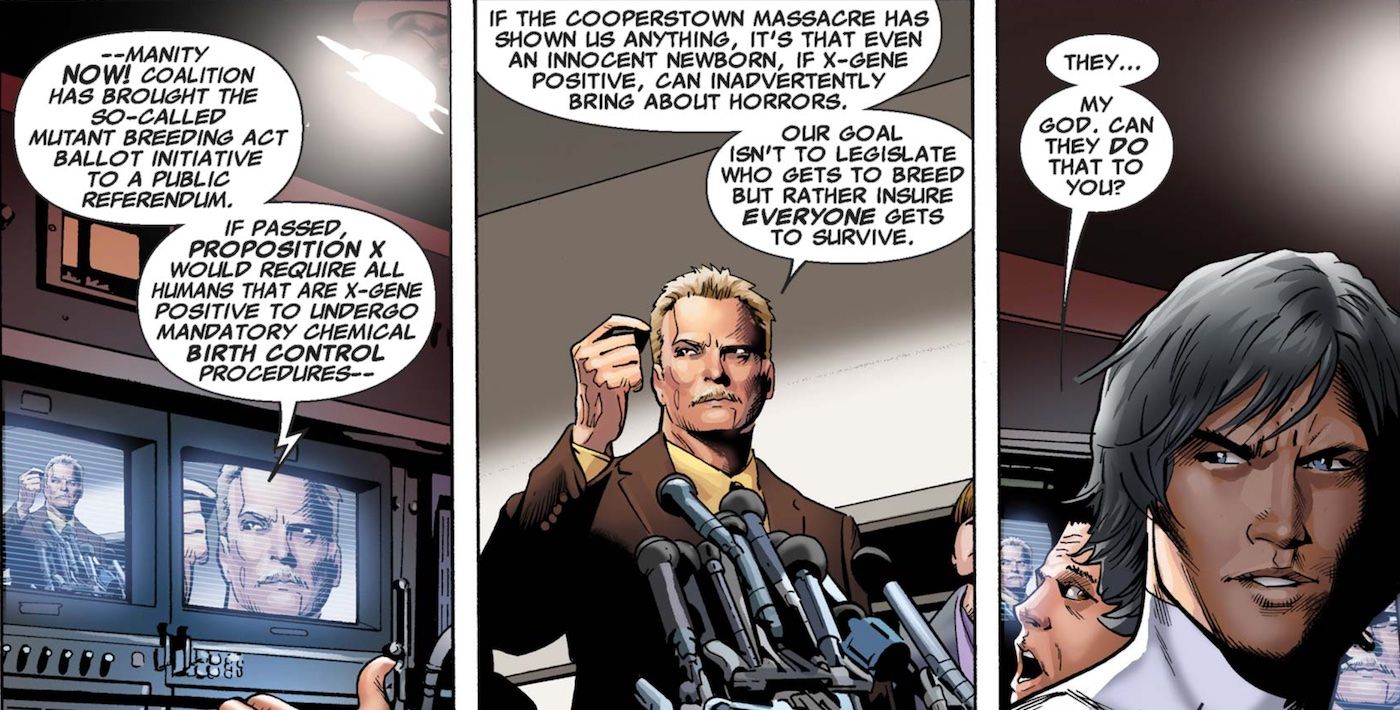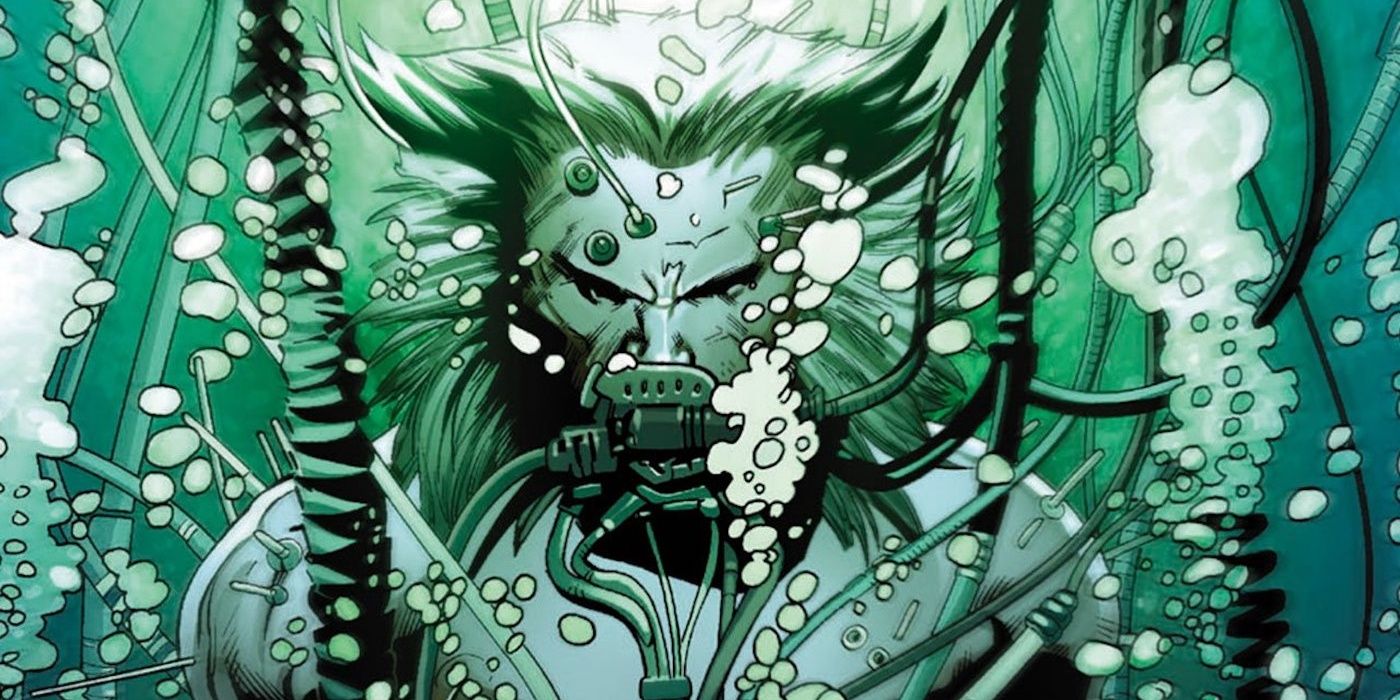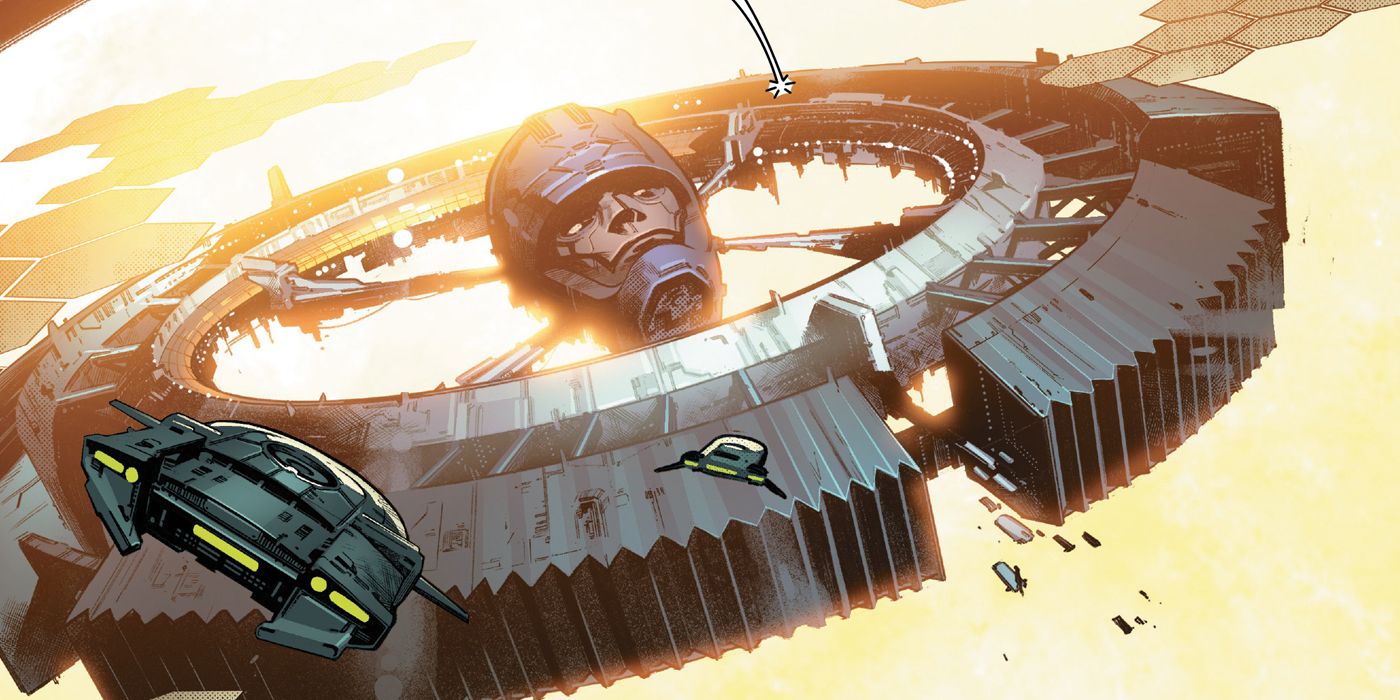Since the beginning, the X-Men and other mutants have faced persecution, terrorism, and even genocide. From anti-mutant humans like Bolivar Trask with his Sentinels to superheroes like the Scarlet Witch who caused M-Day, it has been difficult for Homo superior to catch a break. While mutants contend with many independent actors, they also deal with the government. For decades, governing bodies around the world have created and implemented different ways to try and solve the “mutant problem.”
The U.S. Government frequently attempts to control or destroy mutants. The ever-growing variety of dangerous mutant-hunting Sentinels is perhaps the most common government tool for trying to ensure humanity’s survival. Other efforts included mutant birth control and even forced mutant government employment. Despite all of these efforts, nothing has worked--yet. Even today, human governments continue to try to find a solution.
10 The Mutant Registration Act Was Proposed To Essentially Dox Mutants
The Mutant Registration Act (MRA) was a famous piece of legislation introduced in the 1980s. It was created by Senator Robert Kelly, who had a strongly anti-mutant platform. In response to the perceived “mutant threat,” the MRA required the registration of all mutants into a government database so they could be identified and tracked.
The MRA was passed into law and enforced intermittently throughout the comics with unregistered mutants being rounded up. It also enabled human vigilantes to target registered mutants. The first X-Men film featured the threat of the MRA, also spearheaded by Senator Kelly. The bill did not pass in the film.
9 The Superhuman Registration Act Built On The Mutant Registration Act Concept
In Civil War, one of Marvel's more well-received crossover events, the U.S. government proposed the Superhuman Registration Act (SRA). With Iron Man’s support, Congress quickly passed the SRA after a superhero conflict killed hundreds of civilians. The SRA was similar to the Mutant Registration Act, but with a wider scope. It included every super-powered individual regardless of the source of their powers, including mutants.
The SRA found both supporters and opposition among superheroes. This resulted in the internal conflict that was later adapted in Captain America: Civil War. The X-Men, perhaps exhausted from fighting past anti-mutant legislation, remained officially neutral in the conflict. The SRA was eventually repealed.
8 The Mutant Control Act Legalized Mutant Registration In Days Of Future Past
The Mutant Control Act (MCA) was first mentioned in Chris Claremont’s famous Days of Future Past story arc. In the Days of Future Past timeline (Earth-811), the MCA was essentially the equivalent of Senator Kelly's Mutant Registration Act that would later be passed in the Earth-616 timeline. The MCA was pushed through by the U.S. president, who capitalized on anti-mutant sentiment after Mystique assassinated Senator Kelly.
Unlike the MRA, though, the MCA was overturned by the Supreme Court. In response to the ruling, the president activated Sentinels to destroy the nation's mutants. The Sentinels' programming determined the best way to do this was to also wipe out humans. This resulted in the apocalyptic future of Earth-811 and was one of the many events that almost wiped out mutants.
7 Project Wideawake Monitored, Studied, And Eliminated Mutants
Project Wideawake was one of the worst things humans ever did to mutants. The National Security Council created the covert operation in an effort to control mutants through monitoring and, if necessary, eliminating them. The rise of mutants across the world alarmed the U.S. Government, which developed the program to better understand the perceived growing mutant threat to humanity.
The project was led by Henry Peter Gyrich. It also involved Sebastian Shaw of the Hellfire Club. Despite being a mutant, Shaw used Project Wideawake to funnel money to Shaw Industries and create Sentinels for Gyrich. Members of the program also had the idea of using a select team of American mutants to counteract the growing threat of international mutants.
6 Operation: Zero Tolerance Used Prime Sentinels To Target Mutants
After the events of Onslaught, U.S. anti-mutant sentiment was high. The psionic entity that was Onslaught was created when Xavier and Magneto’s consciousnesses merged with disastrous consequences. In response to Onslaught's attack on the Marvel Universe, Bastion and Henry Peter Gyrich pushed the U.S. Government to deal with mutants. They also offered the means to do it through Operation: Zero Tolerance.
Operation: Zero Tolerance employed Prime Sentinels to capture and eliminate mutants across the United States. Created by Bastion, the Prime Sentinels were humans implanted with nanotech that turned them into Sentinels. X-Men teams across the country were attacked, Xavier was captured, and the X-Mansion was raided. Ultimately, however, the operation failed.
5 The Sentinel Initiative Tried To Eliminate X-Gene Carriers Across America
In the Ultimate X-Men world of Earth-1610, Bolivar Trask was the man behind the U.S. government’s Sentinel Initiative. The creation of the project was attributed in large part to Magneto’s attack on Washington D.C. The Sentinels patrolled some of the United States’ largest cities searching for and eliminating anyone carrying the X-Gene.
The President also ordered Trask to send his mutant hunting Sentinels to wipe out the Savage Land. However, Magneto was able to reprogram the Sentinels and sent them to attack the capital. This resulted in the Sentinel Initiative being abandoned.
4 The Canadian Super-Powers Registration Act Put Mutants To Work
Canada is the home of several famous mutants, including Wolverine. As with most other governments, Canada also dabbled with controlling mutants. One notable example is the Canadian Super-Powers Registration Act. This act required those with superhuman abilities, mutants included, to enlist in one of the government’s Department H programs.
Department H, under the Department of Defense, was responsible for monitoring and dealing with super-humans. The idea was to force these individuals into government employment where they could be productive and also monitored. Some of the Department H programs available included Alpha Flight and Gamma Flight. Though it was never formally repealed, the act did fall out of practice.
3 Proposition X Sought To Eliminate Mutant Breeding
Proposition X was a piece of legislation advocated for by Simon Trask with the goal of controlling and even eliminating mutant births. Under this legislation, which was also known as the Mutant Breeding Act Ballot Initiative and Prop X, anyone identified as carrying the X-Gene would be forced to undergo chemical birth control procedures.
Trask--Bolivar Trask's brother--was the leader of the Humanity Now! coalition in California, where he pushed Prop X. In San Francisco, Trask led a march to support Prop X. Activists led by some of the X-Men, then based out of San Francisco, counter-protested and riots broke out. In another X-Men narrative that mirrored real-world issues, Prop X reflected the real California Proposition 8 measure against same-sex marriage.
2 The Weapon X Project Tried To Control Mutants By Weaponizing Them
While many government programs sought to solve the mutant problem through laws or extermination, the Weapon X Program decided to do so through experimentation and weaponization. Rather than wiping them out, this program was designed to control mutants and benefit from them. Operated by Canada's Department K, the Weapon X Program recruited and even kidnapped mutants with valuable abilities that could be weaponized.
Some famous characters to come out of the Weapon X Program include Wolverine, Sabretooth, and Deadpool. The idea of employing mutants (at least, those who volunteered) to control them is reminiscent of the Canadian Registration Act requiring all superpowered humans to work for the government.
1 Orchis Continues To Combat Mutant Population Growth
One of the most recent governmental attempts to deal with mutants is Orchis. Made up of several pre-existing government entities and organizations, Orchis includes S.H.I.E.L.D., S.T.R.I.K.E., and S.W.O.R.D. Making its debut in Jonathan Hickman's House of X, one of the top X-Men story arcs every fan should read, Orchis is immediately an awe-inspiring threat.
Orchis' goal is to ensure humanity is prepared for the time when mutants start to outnumber and potentially overtake Homo sapiens. To do so, Orchis created The Forge, a space station made from the Sentinel Mother Mold and the planet destroyer, Sol's Hammer. The X-Men sent a strike team that successfully destroyed the Mother Mold, but the threat is far from over.

